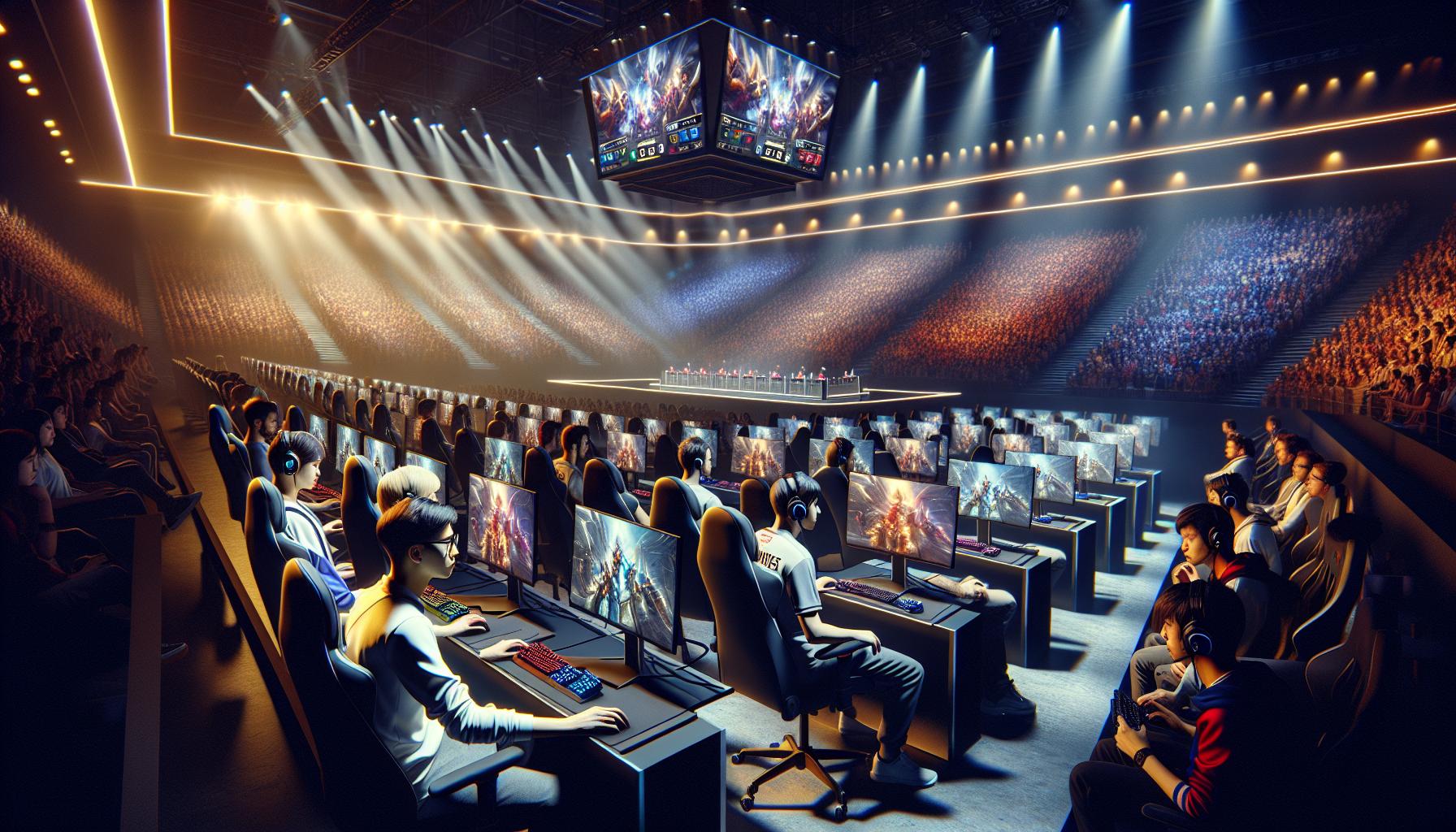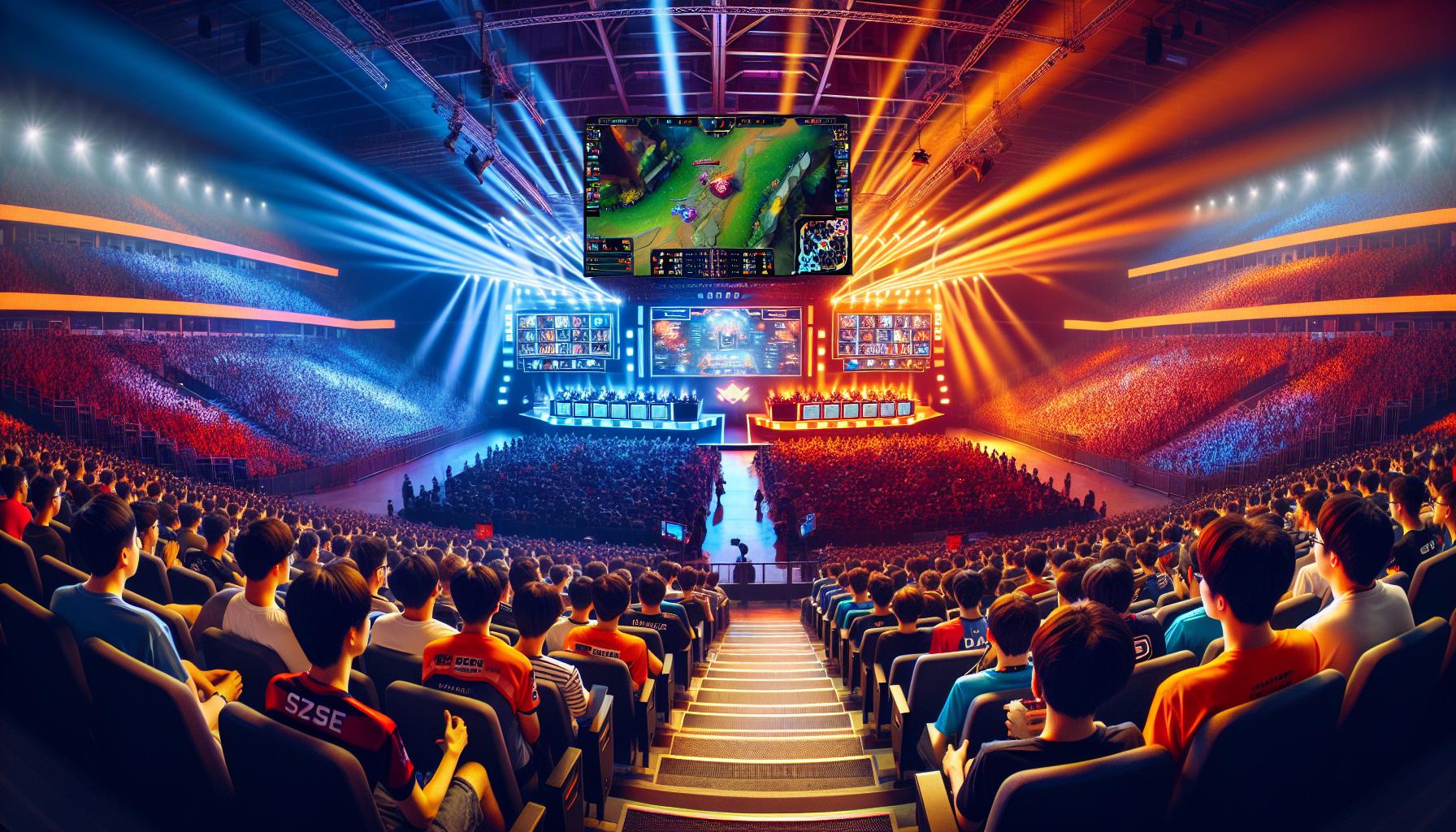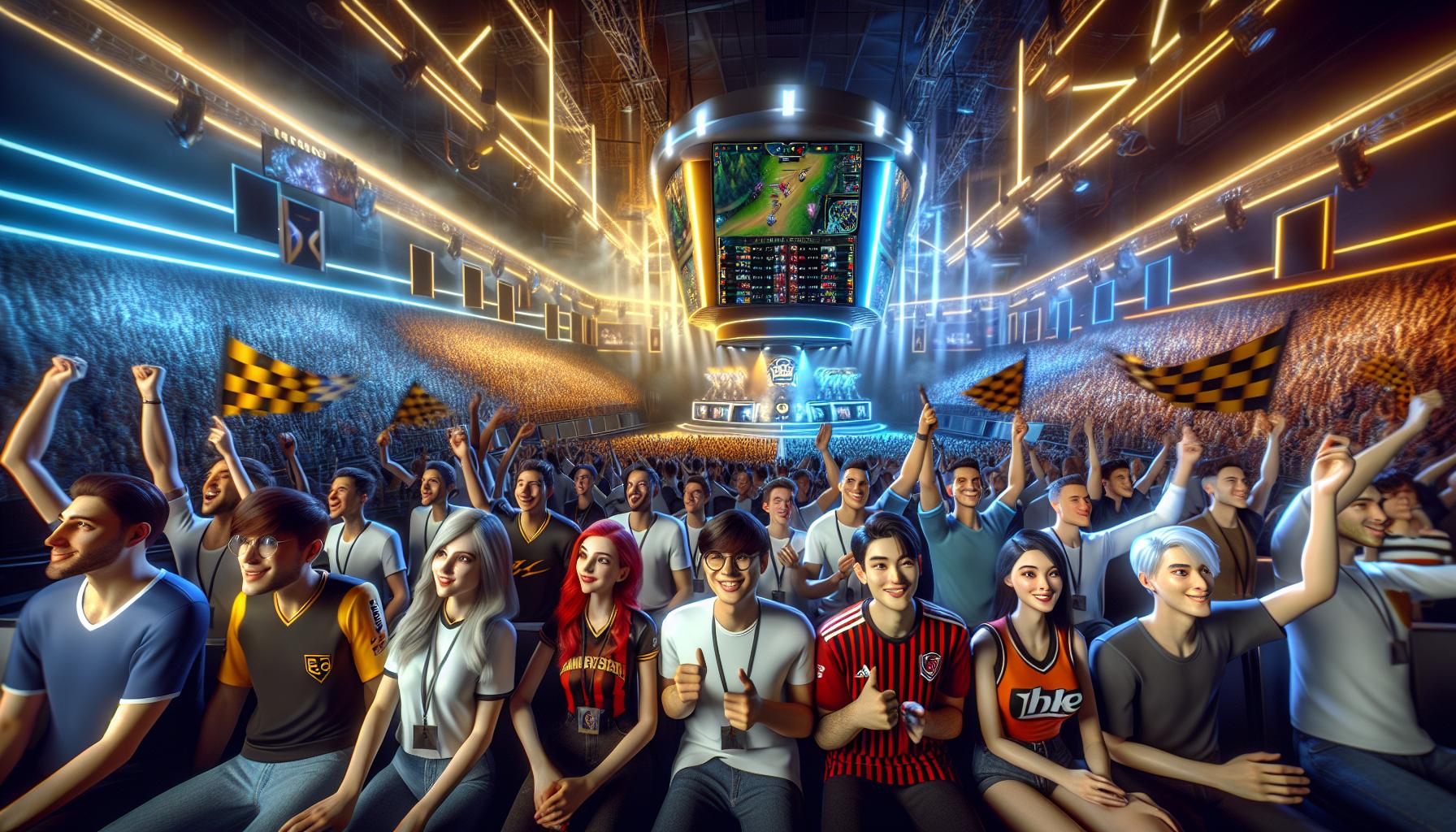 Key Takeaways
Key Takeaways
- Global Phenomenon: League of Legends esports has become a significant part of the competitive gaming scene, captivating millions of fans worldwide since its launch in 2009.
- Major Tournaments: Key competitions such as the World Championship and Mid-Season Invitational showcase top-tier talent and attract millions of viewers, highlighting the game’s competitive spirit.
- Player Dedication: Professional players average 18 to 25 years old, often with three years of experience, while top earners like Faker have accumulated impressive winnings, reflecting their commitment to excellence.
- Economic Impact: The esports sector benefits significantly from sponsorship deals, advertising, merchandising, ticket sales, and media rights, with revenues surpassing $1.5 billion in 2023.
- Engaged Audience: The demographic of League of Legends viewers predominantly consists of young adults (ages 18-34), with platforms like Twitch playing a pivotal role in fostering community and engagement during live events.
League of Legends has transformed from a popular video game into a global phenomenon, captivating millions of fans and players alike. As one of the leading esports titles, it boasts a rich history filled with thrilling competitions, iconic players, and unforgettable moments. Understanding the intricate world of League of Legends esports reveals not just the game itself but also the culture and community that surround it.
From explosive tournaments to record-breaking viewership, the facts behind League of Legends esports showcase its immense impact on the gaming landscape. Whether it’s the rise of professional teams or the evolution of strategies, each element contributes to the dynamic nature of this competitive arena. Dive into the fascinating statistics and insights that highlight why League of Legends remains a cornerstone of the esports industry.
League of Legends Esports Facts
League of Legends esports has transformed into a cornerstone of the competitive gaming landscape. It offers thrilling events, immense viewership, and a dedicated global community.
Brief History
League of Legends launched in 2009, quickly establishing itself as a leading multiplayer online battle arena (MOBA) game. The first major esports event, the Season One World Championship, occurred in June 2011, drawing over 1.5 million online viewers. Subsequent seasons saw exponential growth, introducing annual tournaments with increasing prize pools and professional leagues. By 2021, the World Championship boasted a prize pool exceeding $6 million, solidifying its status in the esports realm.
Major Tournaments
League of Legends features several prestigious tournaments, each highlighting the game’s competitive spirit. Prominent tournaments include:
- World Championship: The official annual championship, crowning the best team globally.
- Mid-Season Invitational (MSI): An international competition that showcases the champions of different regions.
- Regional Leagues: Events such as the League of Legends Championship Series (LCS) and League of Legends European Championship (LEC) serve as the backbone of professional play, providing teams a platform to qualify for international competitions.
These tournaments attract substantial audiences, with millions tuning in for live broadcasts and online streams, reflecting the game’s widespread popularity and engagement in the esports community.
Key Facts About League Of Legends Esports

League of Legends esports features dynamic competition and substantial viewership statistics. The game continues to shape the esports landscape with impressive player and team performances.
Player Statistics
Players in League of Legends esports exhibit remarkable dedication and skill. Over 100 million players engage with the game globally, but only a fraction reach the professional level. The average age of professional players ranges from 18 to 25 years. Notably, players like Faker, Caps, and Doinb achieved significant success, earning millions in tournament winnings. As of 2023, the highest-earning player, Faker, has amassed over $1.2 million in prize money alone. Additionally, the average tournament experience of players is around three years, illustrating the commitment required to excel.
Professional teams in League of Legends showcase extraordinary teamwork and strategy. Teams compete in various regional leagues, such as the LCS, LEC, and LPL, with the top teams advancing to the World Championship. The total number of teams in these leagues often exceeds 10 per region. In 2022, the League of Legends World Championship attracted over 30 million peak viewers, underscoring the competitive intensity. Teams like T1, G2 Esports, and DRX demonstrate consistent excellence, with T1 boasting three World Championship titles since 2013. Each team invests extensive resources in training, with annual budgets reaching up to $10 million, ensuring a competitive edge in their respective leagues.
Economic Impact Of League Of Legends Esports

League of Legends esports significantly impacts the global economy through various lucrative avenues. This phenomenon generates substantial revenue, creates jobs, and fosters sponsorship opportunities across the gaming and advertising industries.
Sponsorship Deals
Sponsorship deals play a crucial role in the financial landscape of League of Legends esports. Major brands partner with professional teams and tournaments to reach a dedicated audience. Sponsorship agreements can range from thousands to millions of dollars annually, depending on the team’s audience size and engagement. For instance, deals with companies like Red Bull, Coca-Cola, and Audi highlight the intertwining of traditional brands with esports. In 2022 alone, sponsorships accounted for over 50% of total revenue in the esports sector, emphasizing the financial significance of these partnerships.
Revenue Streams
Multiple revenue streams contribute to the economic success of League of Legends esports. These include:
- Advertising Revenue: Streaming platforms like Twitch and YouTube generate considerable ad revenue during live broadcasts and highlight reels.
- Merchandising Sales: Teams sell branded merchandise, including jerseys and accessories, providing fans with a way to support their favorite players or organizations.
- Ticket Sales: Live events and tournaments attract fans willing to purchase tickets, contributing to the overall revenue.
- Media Rights: Broadcast rights for major tournaments increase the game’s visibility and profitability, with networks bidding substantial amounts to showcase these events.
- In-Game Purchases: Players often purchase skins and other in-game content, with a portion of the revenue funding esports operations.
In 2023, estimated total revenues from League of Legends esports surpassed $1.5 billion, demonstrating its financial impact within the gaming industry.
Audience Engagement In League Of Legends Esports

Audience engagement in League of Legends esports underscores the enthusiasm and loyalty of its fan base. Understanding viewer demographics and leveraging streaming platforms enhances this engagement significantly.
Viewer Demographics
Viewer demographics reveal significant trends in League of Legends esports. Statistics indicate that approximately 70% of viewers fall within the 18 to 34 age group, reflecting the appeal among younger audiences. Gender representation has shown improvements, with women making up around 30% of the esports viewership in recent years. Geographically, Asia represents the largest viewer base, accounting for nearly 50% of total viewership, followed by North America and Europe. These demographics help brands and teams tailor their marketing strategies to effectively reach and engage fans.
Streaming Platforms
Streaming platforms play a crucial role in audience engagement for League of Legends esports. Platforms like Twitch, YouTube Gaming, and Facebook Gaming host live broadcasts, yielding millions of concurrent viewers during major events. Twitch remains the dominant platform, attracting over 50 million monthly active users primarily interested in gaming content. League of Legends streams receive millions of unique views, with peak concurrent viewers often surpassing 3 million during high-stakes tournaments. Content creators and streamers also contribute to engagement through gameplay commentary, analysis, and community interactions, fostering a vibrant ecosystem around the game.
Team Performance
League of Legends esports has undeniably carved out a significant place in the gaming world. Its impressive growth from a popular game to a global phenomenon showcases the dedication of players and fans alike. The combination of thrilling competitions and strategic gameplay creates an engaging experience that continues to attract millions.
As the community evolves and the economic impact expands, the future of League of Legends esports looks promising. With dedicated teams and passionate viewers, it’s clear that this vibrant scene will keep pushing boundaries and setting new standards in competitive gaming.